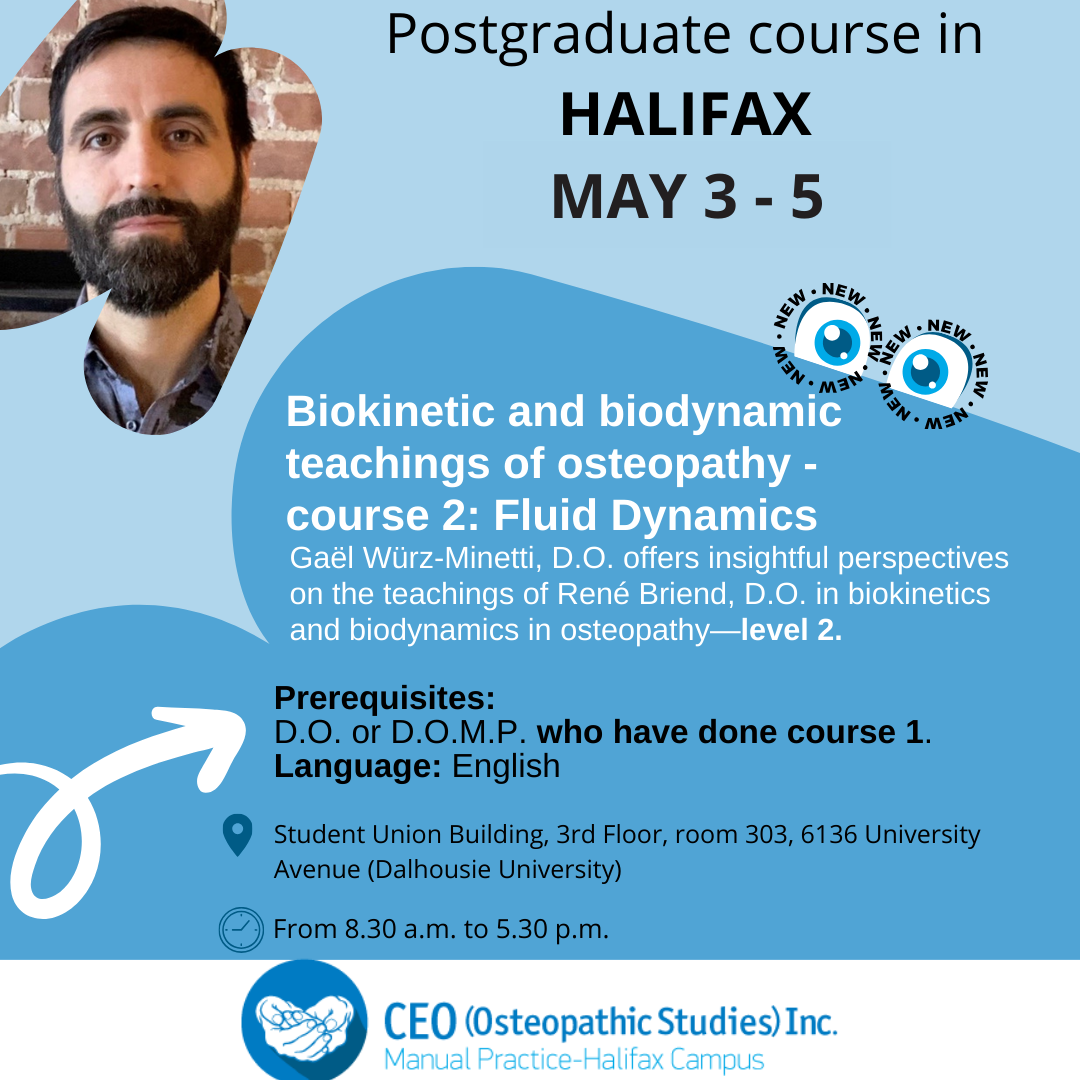Biokinetic and biodynamic teachings of osteopathy - course 2 : Fluid Dynamics
Registration is now open for course 2 ! Take part in level 2, in Halifax, from May 3 to 5, 2024.
Gaël Würz-Minetti, D.O. offers insightful perspectives on the teachings of René Briend, D.O. in biokinetics and biodynamics in osteopathy—level 2.

Topic: Biokinetic and biodynamic teachings of osteopathy - course 2 : Fluid Dynamics
Prerequisites: D.O. or D.O.M.P. who have done course 1.
Language: English
Description:
Our body water percentage is approximately 75%; we are essentially water in motion. Those fluids are propelled by well-known mechanical factors, but also by inherent biokinetic forces, our vital forces moving at the tempo of the medium tide and biodynamic forces, which refer to the long tide of the Breath of Life. This is why the term "hydro-fluidic body" refers to both liquids and energetic fluids. It is crucial to address our entire body's hydro-fluidic system because it reacts to traumatic, toxic, or emotional shocks that can greatly affect our immune and endocrine systems, as well as our energy levels. In this course, we will explore three different approaches that are considered gems:
-
The evaluation and treatment of fluidic fluctuations. This includes assessing the longitudinal central fluctuation along the spinal canal, which W.G. Sutherland referred to as "the river of life" where transmutation occurs, as well as the multi-directional centro-lateral fluctuation throughout the entire hydro-fluidic body. We will also learn how to disengage local inertial states and restore healthy physiological fluid fluctuations.
-
The Automatic Shifting of the fluids fluctuations. This is a product of the therapeutic process that René Briend D.O. revisited from a previous approach described by a student of W.G Sutherland D.O. This process involves allowing the breath of life to interact within the hydro-fluidic body, which helps to release areas of inertia, tension, and osteopathic dysfunctions. The process results in bringing the entire hydro-fluidic body to a state of suspended immobility.
-
Finally, we'll look at how to balance the yin and yang aspects of our vital forces, known respectively as soft inherent potency and vectorial inherent potency. This imbalance usually contributes to states of sympathy when soft inherent potency is condensed around the anterior generator of vital forces, along the paravertebral ganglion chain.
The whole biokinetic and biodynamic approach of osteopathy is based on courses 1 and 2. The tools learned in those seminars are necessary for the subsequent courses developed by René Briend.
To register : www.osteocontinuingeducation.com/Registration/
For more information : [email protected]
